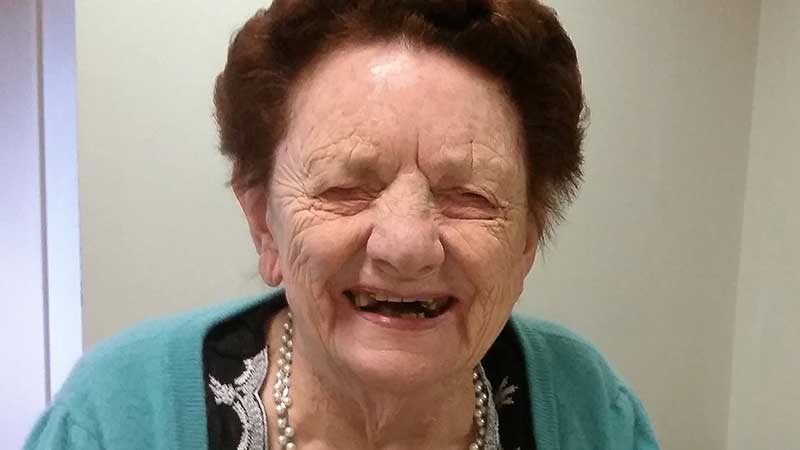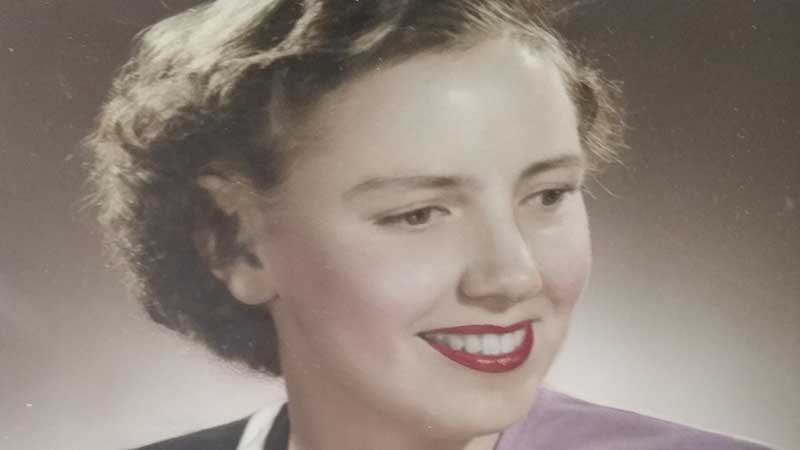Trailblazer has a faith foundation
Dorothy Hamilton (nee Nuske) was born in Rainbow, in the northwest of Victoria, in 1926. Dorothy was born blind. ‘Not vision-impaired’, she insists, ‘totally blind!’
Yet Dorothy has been and continues to be, a high achiever and a trailblazer. Turning 93 this year, her service to music and to people who are blind or have low vision has been recognised in the Australia Day Honours 2019 with an Order of Australia Medal.
She was the eldest of seven children in her family, three of whom were born blind. At the age of six, Dorothy moved to Melbourne to live at the Royal Victorian Institute for the Blind (now Vision Australia) to begin her education. Her parents brought her to St Johns Church, in the city for worship; and her first impression was that it was a nice place because there were cushions on the seats!
She still remembers St Johns first resident pastor Alfred Brauer who wrote the history of Lutheranism in Australia, Under the Southern Cross. ‘During term time’, Dorothy recalls, ‘he would come by tram each Saturday afternoon and take me to the manse in Toorak for the weekend so that I could go to church with them on Sunday. On Saturday evening, Mrs Brauer would ask me what I would like for tea, and I always replied, “I would love a boiled egg”. On Sunday evening Pastor Brauer would take me back to school on the tram and then go on to take the evening service.’ Later on, members of St Johns took turns to bring her to church and Sunday school.
With an excellent musical education, Dorothy became an accomplished musician. At 14 she gained first place in Victoria in sixth grade piano. The examiner, Sir Bernard Heinze, then conductor of the Melbourne Symphony Orchestra, recommended that Dorothy be given the opportunity to study at the Melbourne Conservatorium of Music. Several years later, she became the first blind woman in the Southern Hemisphere to obtain the degree of Bachelor of Music.
‘I became a teacher and my aim was to be teaching at a sighted school’, she says. ‘Eventually I achieved this when I accepted a position as music teacher at Korowa Girls School in Glen Iris, a suburb of Melbourne.’ At Korowa, where she was employed from 1953 to 1957, Dorothy taught piano, recorder and choir, and played the organ for school ceremonies.
Meanwhile, she continued as an active member of St Johns congregation. ‘It meant a lot to me that I could be a regular member of the youth group and I played the piano for youth meetings and social activities’, she says. ‘I was a member of the church council, sang in the choir and taught Sunday school.’
Keith Hamilton was also a committed member of St Johns and, as time went on, he often accompanied Dorothy to the tram for her journey home. A loving relationship developed, and Dorothy resigned from her teaching position, married Keith and became the mother of four children: John, Peter, Margaret and Rosemarie.
When the children were all at school, Dorothy started her own music teaching practice, which she ran from 1970 to 2000, sometimes with as many as 30 to 40 students.
Her next groundbreaking project was to transcribe music into braille, an endeavour that she continues to this day at Vision Australia.
Dorothy also became a proofreader of braille documents. Then, in the early 1990s, she conceived of a way to transcribe music into braille using a computer. Her innovative work enabled people who are blind to produce braille documents independently and make multiple embossed copies with the press of a computer key.
In the mid-1990s she travelled to Germany as an Australian delegate for a braille music conference and included Wittenberg on her tour. ‘I was able to place my hand on the 95 Theses’, she recalls. Returning via London, she visited the Royal National Institute for the Blind and asked about the institute’s progress in using a computer for transcription. Their response? ‘Impossible!’ So Dorothy taught them her system.
These days, Dorothy has a Braille Sense laptop which gives her access to a wide range of information via braille, and includes a sophisticated speech program – aptly named ‘Jaws’. She carries her laptop everywhere. ‘People think it’s a handbag!’, she says. Dorothy reads emails, newspapers and The Lutheran via Braille Sense. The hymns for worship are sent to her by St Johns office each week so she can bring the braille version to church.
‘Technology has transformed my life’, Dorothy says. ‘And my Christian faith has been the foundation for taking hold of life, achieving much, and giving back in return.’
For each incredible milestone Dorothy has achieved, she says that the community of St Johns Southgate has supported her through every step of her journey. ‘It’s a very welcoming community and it’s a lovely one to be part of’, she says. ‘My son (Peter) and I attend St Johns every week and we wouldn’t be without our church.’
Dr Eleanor Long is a member at St Johns Lutheran Church Southgate in central Melbourne. Now retired, she is a former mathematics teacher, has a PhD in mathematics education, previously was CEO of the College of Obstetrics and Gynaecology and, after her official retirement, worked part-time as a consultant in medical education. She has known Dorothy for 15 years.
Know of any other GREYT stories in your local community? Email the editor lisa.mcintosh@lca.org.au
Know someone who uses a braille reading machine? Get in touch via the above email arrange a subscription to The Lutheran.
READ MORE STORIES ABOUT awards, music, technology, Vic-Tas



